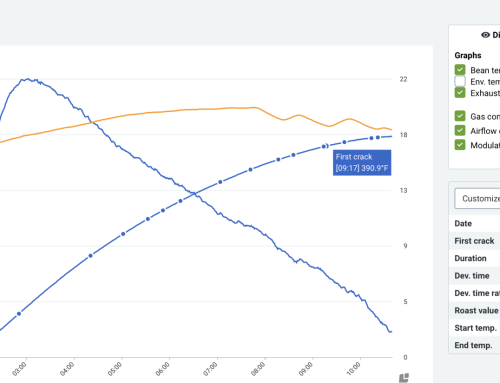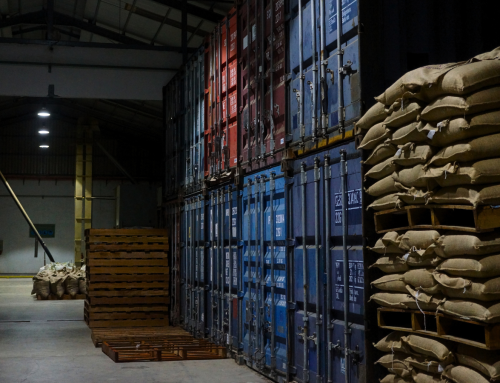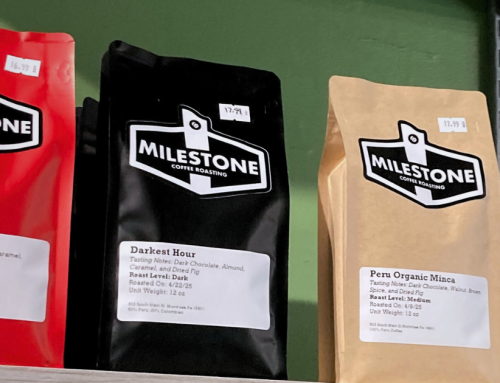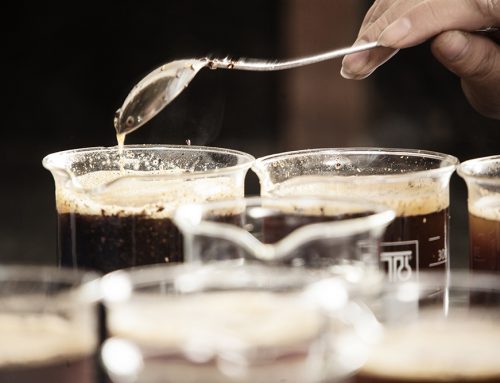Robusta coffee is hot. In fact, Robusta coffee beans are selling at a 30 year high, so let’s uncover where we are, how we got here and where we’re going.
Robusta is known for its bold flavor profile and higher caffeine content, holds a significant place in the global coffee market. Its cultivation is primarily concentrated in regions like Vietnam, Brazil, and Indonesia. From climate change-induced challenges to market fluctuations and shifting consumer preferences, the landscape surrounding Robusta coffee is ever-evolving.
In this article, we delve into the intersection of Robusta coffee and contemporary events, exploring how Coffea canephora (Robusta’s scientific name) navigates the changes and adapts to the demands of a rapidly evolving industry.

Robusta coffee being processed using the Natural (dry) method
Arabica vs. Robusta Coffee
Arabica and Robusta coffee beans are distinct species belonging to the Rubiaceae family within the Coffea genus. Like the diverse attributes found within distinct species like tomatoes, potatoes, and eggplants under the Solanum genus, each coffee species boasts its own flavors and growing characteristics.
Around 60% of the world’s coffee volume is Arabica coffee. The species is native to the fertile forests of Ethiopia, where it still grows wild today. Arabica coffee beans made their way to Yemen via traders in the 15th century and spread throughout Europe in the 16th century.
The main differences between Arabica vs. Robusta coffee lie in flavor, cultivation, and trade. Coffee brewed from Arabica beans is sweeter, more complex, and has more flavors due to how coffee trees are cultivated at high altitudes.
Robusta coffee naturally contains more caffeine. This results in more bitter flavors in the cup but is highly advantageous in the growth process. Caffeine is a natural pest repellant, making Robusta coffee plants highly resistant to insects and diseases like leaf rust, which is handy when they are cultivated in warmer climates with lower elevations. (They truly are quite robust plants.)
Due to the delicate nature of Arabica plants and the extra effort required for cultivation, Arabica coffee is priced higher than Robusta coffee. According to the International Coffee Organization, around 56% of the total coffee volume traded worldwide is Arabica, while the remaining 44% is Robusta.
Despite Arabica and Robusta beans collectively constituting approximately 99% of global coffee production and consumption, the spectrum of coffee species extends beyond these two. Ongoing discoveries of new species and the exploration of alternative varieties offer potential solutions to mitigate the impact of climate change on coffee cultivation.
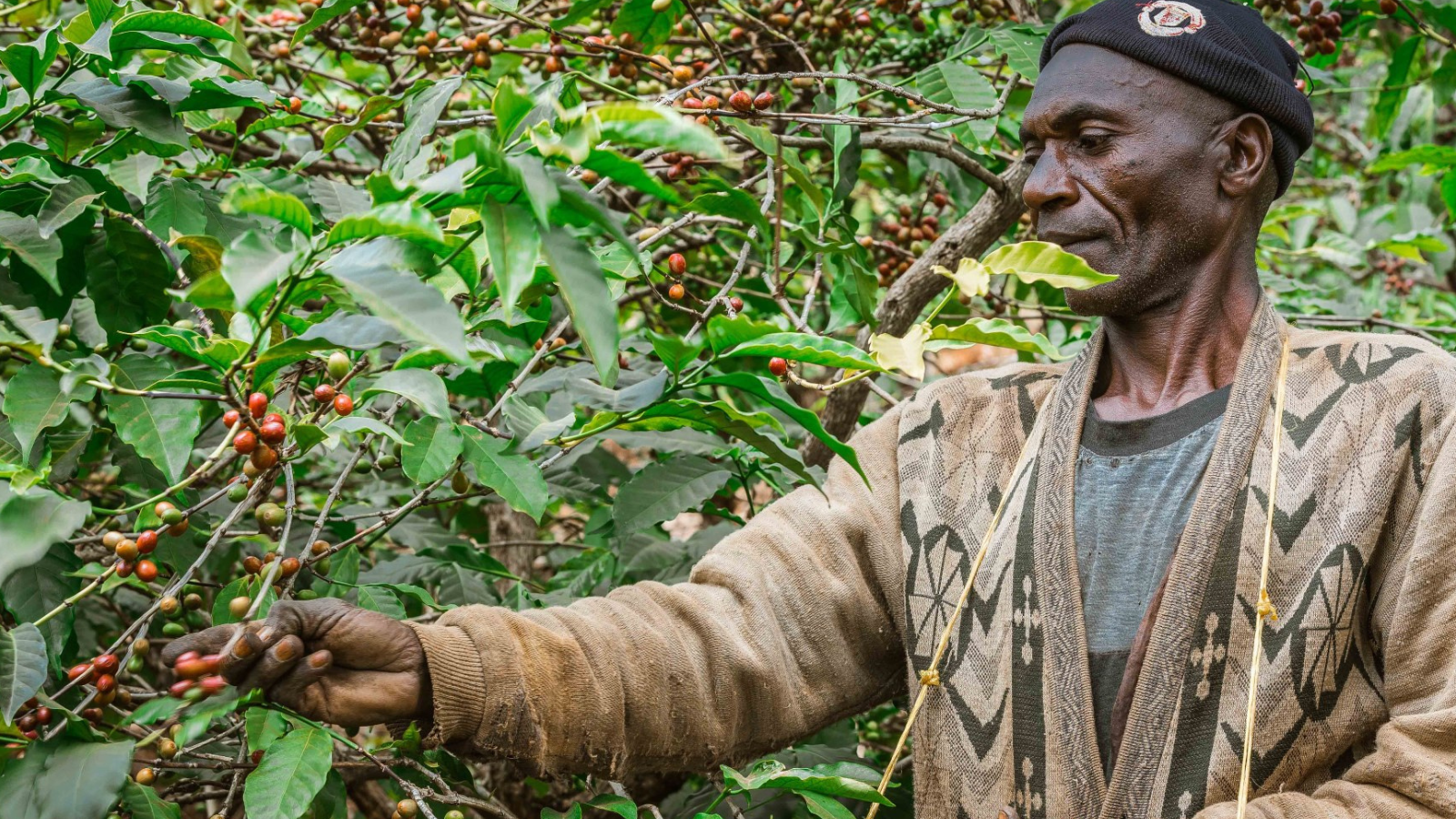
Tanzanian Robusta coffee farmer
What is Coffea canephora?
Robusta is the most well-known variety of Coffea canephora and arrived on the scene around 100 years after Arabica coffee, towards the end of the 19th century. Its origins lie in Central and Western Africa, and its name comes from the fact that it’s a more robust plant. In contrast to Arabica, Robusta can thrive in a broader range of environments.
Robusta quickly gained prominence for its resilience and adaptability to a variety of climates and altitudes. It was first recognized for its commercial potential during the late 19th century when European colonists began establishing coffee plantations in African territories. Its robust nature made it well-suited for cultivation in regions where Arabica struggled. The Robusta species propered in low-altitude areas with high temperatures and humidity. This resilience contributed to the rapid expansion of Robusta cultivation across Africa, particularly in countries like Uganda, Ivory Coast, and Madagascar.
Robusta arrived in Vietnam in 1908 via the French and was later introduced to South America in the 1930s. The innovation of soluble coffee in the 1950s and the skyrocketing demand for coffee syrup and cheap blends propelled the widespread adoption of Robusta coffee in producing countries. Today, Robusta remains an integral part of the global coffee industry. The biggest producer of Robusta is Vietnam, which accounts for more than a third of the world’s total Robusta production.
For an insightful look into the history of Robusta coffee, check out World Coffee Research. Their recent work has helped to identify the different varieties – and consequently future potential and development – of Coffea canephora.
Despite facing challenges such as fluctuating market prices and environmental pressures, robusta coffee continues to play a vital role in meeting the diverse preferences of coffee consumers worldwide.

Robusta farmer picking coffee cherries
What’s going on with Robusta coffee in 2024?
As of February 2024, the price of Robusta was at a 30-year high, reaching US153.23/lb. The main drivers are increased demand as market perception of Robusta coffee and blends shifts and supply shortages caused by climate change and the Red Sea conflict.
According to the US International Trade Commission, global demand for Robusta is on the rise. Recently, macro roasters such as Blue Bottle and Black Sheep in the UK started offering 100% Robusta options. Roasters like Nguyen Coffee Supply, which specializes in Vietnamese Robusta coffee, can also be found at Whole Foods. Sahra Nguyen, founder of Nguyen Coffee Supply, is challenging the image of Robusta coffee in the US market. The company aims to provide high-quality Robusta grown with the same careful techniques as Arabica. They are pushing for better production, more selective harvesting practices, and innovative processing methods.
As roasters incorporate more Robusta into their blends to manage rising costs, the narrative around single origin vs. blend coffee is also shifting in their favor. As more and more blends appear on the competition stage for both World Barista Championships and World Brewers Cup events, the perception of blends and their ability to offer consistency and versatility over single origin coffees is on the uptick.
In January 2024, Vietnam shipped 3.77 million bags of Robusta coffee, a 66% increase from January 2023 according to the International Coffee Organization’s Coffee Market Report. The record high prices, combined with Tet (Lunar New Year), one of Vietnam’s most socially significant holidays, may have motivated producers to sell withheld stocks to cash in on the opportunity.
Over 90% of the global Robusta production comes from Vietnam, Brazil, Indonesia, Uganda, and India. However, rising temperatures and climate change have prompted previously Arabica-only countries like Mexico, Nicaragua, Guatemala, and Colombia to explore growing Robusta too.

Robusta coffee ripening on a tree
The future of Robusta coffee
As global demand for coffee rises, Robusta’s resilience and adaptability position it as a crucial player in meeting this increasing consumption. With its ability to thrive in diverse climates, Robusta is poised to maintain its significance within the coffee industry. Robusta prices and demand will most likely continue to remain high as producing countries and importing roasters alike look to mitigate costs and climate change with Arabica alternatives.
For example, producers in Indonesia are investing in high-quality and specialty Robusta and new Robusta-Arabica hybrids. Additionally, a new Robusta grading scale is being developed to differentiate between commercial and fine Robusta. With such high prices, producers are beginning to see the potential of prioritizing Robusta quality over quantity. Farmers are increasingly willing to invest in improvements.
When 60% of the coffee’s final quality is determined in the processing stage, investing in better harvest and post-harvest practices for Robusta coffee becomes critical. Better quality begins with farmer education. Implementing best practices will result in harvesting ripe Robusta cherries, sorting out defects, and experimenting with processing methods. These practices were previously reserved for Arabica production. Considering Robusta’s thicker layers of mucilage that can increase the risk of overfermentation, careful washed processing or microorganism-assisted fermentation can help. Experiments in processing have been effective in minimizing off-flavors and have yielded brighter Robusta cup profiles.
Genuine Origin’s coffee portfolio doesn’t currently offer Robusta green coffee (we are completely sold out). However, we’re on the lookout for high-quality, traceable Robusta coffees that meet our standards. By leveraging its inherent strengths and embracing advancements in agricultural science and technology, Robusta coffee will continue to play a vital role in the future of the global coffee landscape.

